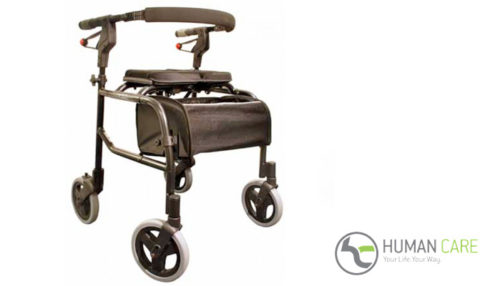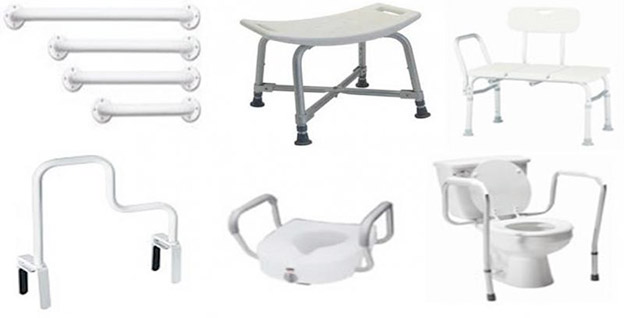7 Winter Safety Tips for Seniors
The winter weather is in full effect in Canada. From snow to sleet, wind chills to deep freezes, the extreme weather can be relentless. Although it is important for everyone to stay protected in these severe conditions, it becomes substantially more vigilant as you age. Not sure where to start? That’s why we’ve developed a list of 7 winter safety tips for Seniors.
1. Avoid Shoveling Snow Shoveling snow is an extremely labour intensive activity. Especially if you are not normally physically active. According to the National Safety Council, in the US, shovelling leads to approximately 100 deaths every year. Cold weather can increase your heart rate and blood pressure which can lead to easier clotting. If you’re over the age of 40 and not regularly active, it is important to take your time to avoid an extensive strain on the heart. If you’re going to shovel, ensure that someone is aware or that you have help! Always remember to consult your doctor prior to engaging in strenuous physical activities.
2. Spend Minimal Time Outside When the lead plumates into the negative double digits, being outside becomes extremely hazardous. The first thing one must worry about is frostbite. When the windchill makes it feel like -28°C, skin that is exposed can freeze in under 30 minutes. Once it hits -40°C, frostbite can take less than 10 minutes, and at -55°C, you have only two minutes before the skin begins to freeze! Frostbite presents itself in different ways. Some warning signs that you may be at risk of frostbite include the exposed skin stinging or burning, and the skin turning white and waxy.
If you think you have frostbite it is best to go to an emergency room. If you can’t make it to a hospital, then you must slowly warm up the affected area with warm water, body heat, or warm clothing. Make sure not to apply direct heat or rub the area. In order to avoid frostbite, it is important to be aware of the temperature outside. If you have to go outside in the extreme cold, ensure that you have layers on, that you stay dry, and that all exposed skin is covered. If you begin to feel any of the warning signs, do not ignore them. Head to a sheltered area and warm up!
3. Avoid Slips and Falls with Grip The winter months are filled with extremely slick conditions. There are several ways to avoid slips and falls. One way is to install grips on the bottom of your shoes. These grips are excellent because they are easy-to-use and inexpensive because they do not involve you purchasing an additional pair of shoes. If you use a cane, there are also grips that you can put on the bottom to keep you safe! They are simple to install and include a pick on the bottom. The pick can quickly be flipped up so that transitioning from the slippery outdoor conditions into an indoor setting is nearly seamless. Contact the experts at Adapt Home Health Care today to learn more about these products.
4. Fire or Carbon Monoxide Leak When the cold weather arrives, people begin using alternate sources for heat. Some of these include fireplaces and space heaters. The issue with using these heat sources is that if they are not installed properly, or they malfunction, there is the potential for a fire or carbon monoxide poisoning to take place. If a fire begins in your home, do not attempt to put it out yourself. Move to safety immediately and call 9-1-1. Carbon monoxide poisoning is dangerous and potentially lethal. Carbon monoxide is a gas that is tasteless, colourless, and odorless. Some of the symptoms that may present themselves with carbon monoxide positioning according to the Government of Canada are:
- Tiredness
- Headaches
- Shortness of breath
- Impaired motor functions
When the levels begin to rise, the symptoms can include:
- Dizziness
- Chest pains
- Poor vision
- Difficulty thinking
If the levels grow to be too high, the symptoms can include convulsions, coma, or even death. Some of the precautions that you can take to avoid a house fire or a carbon monoxide leak in your home include:
- Regular maintenance of your fireplace/space heater
- Installation of multiple fire detectors/carbon monoxide detectors
- Inspection of all exhaust vents (dryer, fireplace, etc.) before and after a snow storm
- Regular inspection of any and all fuel-burning appliances
Make sure to follow these precautions in order to avoid disaster this winter.
5. Safety behind the Wheel Driving during the winter months can be treacherous. Snow, blizzards, freezing rain, and black ice can make the roads very dangerous, very quickly. Here are some ways to stay safe on the roads:
- Winter tires
- Slow down
- Take your time
Unfortunately, no matter how careful you are, accidents do happen. We therefore suggest that you keep an emergency roadside kit in the truck of your car. The Government of Canada suggests that this kit should include:
- Blanket
- Wind-Up Flashlight
- Non-Perishable Food Items
- Water
- Extra clothing
- First aid kit
- Map
In addition to this emergency kit, you should also keep the following items in your car:
- Salt/Sand
- Antifreeze/Windshield Washer Fluid
- Tow Rope
- Jumper Cables
Following the above instructions and keeping these items in your car will help keep you safe this winter. We also suggest that you should look into having a roadside assistance package. This is a great idea, especially during the winter months, because it will keep you safe.
6. Create a Disaster Kit Winter brings severe weather. In the case that you are confined to your home for an extended period of time, it is important to have a disaster kit prepared. Ready.gov suggests that this kit should include:
- Water
- Non-perishable food items
- Batteries
- First aid kit
- Blankets/Warm Clothing
- Wrench/Pliers to turn off utilities if necessary
- Cell phone with charger and a backup battery
Beyond these items, there are also items that should be included that are specific to seniors:
- A list of your support network and their phone numbers/contact information
- Additional prescription medication
If there is anything else that you require every day, it is important that you include a duplicate of it in your emergency kit.
7. Vitamin D During the winter months, many people experience a dip in their vitamin D levels. This can be caused by the lack of sun exposure that we experience. According to prevention.com, lack of vitamin D can cause symptoms such as:
- Extensive sweating
- Noticeable weakness
- Chronic pain
- Depression
It is important to maintain a normal level of vitamin D to avoid these negative symptoms. It is also important because vitamin D it is linked to:
- Bone health
- Cancer prevention
- Incontinence prevention
- Diabetes prevention
If you feel like your vitamin D levels may be low this winter, consult your doctor. Remember to always consult your doctor before taking any new medications/vitamins. The winter months bring harsh conditions. However, with the above tips and tricks, you will still be able to safely enjoy its beauty!
If you are looking for any healthcare products to assist you this winter, contact the experts at Adapt Home Health Care today!
- Adapting the Workplace for People with Disabilities - December 2, 2020
- More About Rollators and The NeXus 3 - March 26, 2020
- Bathroom Safety 101 - March 12, 2020

 905-822-1614
905-822-1614



